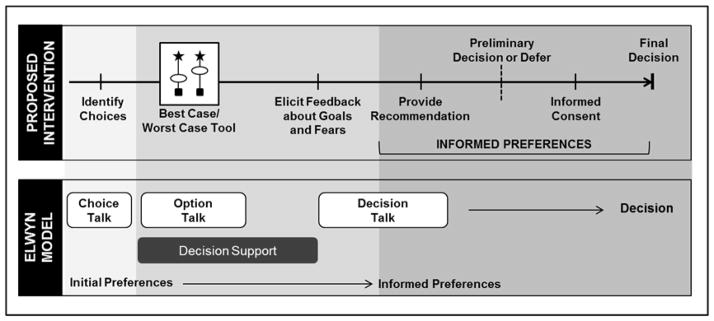Figure 2.
A diagram of how the “best case/worst case” tool is used within in a complete clinical decision making process (top). The proposed use of “best case/worst case” builds on a conceptual model (bottom) described by Elwyn et al that promotes shared decision making and facilitates the development of informed preferences.12 The presentation of choices and options at the outset of the decision process using “best case/worst case” allows the patient to attach personal preferences to treatment options with the physician’s help, forming informed preferences.

